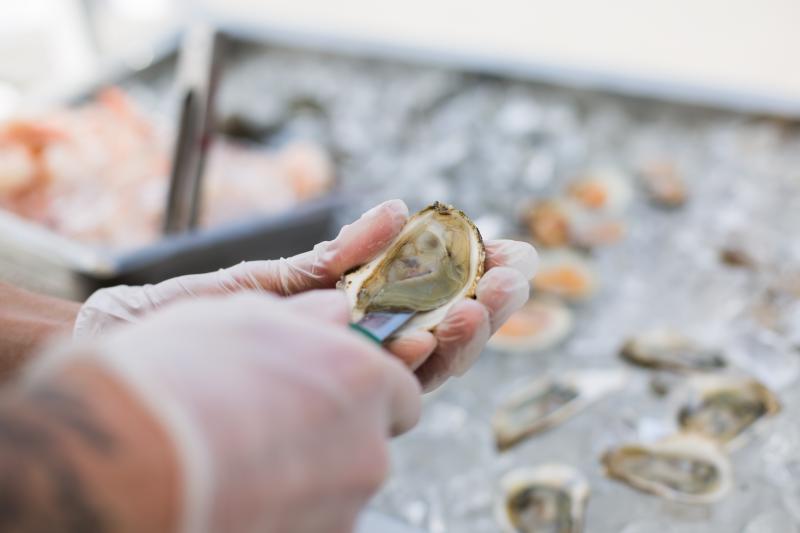Experts open up about Wareham's oyster-growing potential
Wareham is only one of three towns in the state where wild oysters still reproduce naturally, says Steve Patterson, an expert on the valuable bivalve. That means the town is in an excellent position to lead the way in restoration efforts.
“There’s no place else in Massachusetts that can call itself the epicenter of oyster restorations,” said Patterson. “I envision glass bottom boats going out over teeming oyster beds full of crabs, fish and other species.”
Patterson spoke as a guest at the Wareham Marine Resources Commission meeting Wednesday alongside Wareham Department of Natural Resources Director Garry Buckminster.
Patterson, who has more than 20 years of experience in the field of aquaculture science and shellfish management, owns and operates Crooked River Shellfish Farm near Long Beach. He explained that the salinity of the town's water make it superb habitat for oysters.
Buckminster has secured at least $200,000 in grants to pump up the town’s oyster growing efforts over the past few years. This year, his department has two “upwellers” where 1.1 million oyster seeds are being grown until they’re big enough to be released into local waters.
The upwellers look like ordinary, wooden floating docks, but beneath are trap doors that open onto troughs where minuscule oysters are placed. In those troughs, nutrient rich water is pumped through the system by an electrical engine, helping the shellfish grow. Buckminster noted some of those oysters will be released next week.
Patterson said he wants to see natural oyster habitats restored across New England, saying wild American oysters are an endangered species. While millions of oysters are raised each year for human consumption in beds across the state, Patterson said only harbors in Wareham, Wellfleet and Marion provide habitat where wild oysters can reproduce naturally.
Bringing oysters back would be a boon for local ecosystems, said Patterson, even though “there’s no money in it.”
Buckminster said his department has been doing its part to help boost local oyster populations. In addition to increasing the number of oysters grown, officials have limited harvesting to recreational users. That happened after commercial harvesters removed an estimated 70,000 oysters in one year, said Buckminster.
The focus of Wareham’s restoration efforts is Onset Island, said Buckminster. That’s where many of the department’s oysters are placed. Buckminster said he hopes in the future to hold educational, oyster-related programs on the island.
Until then, Buckminster and Patterson said they would continue to help Wareham become once again known for its oysters.

















